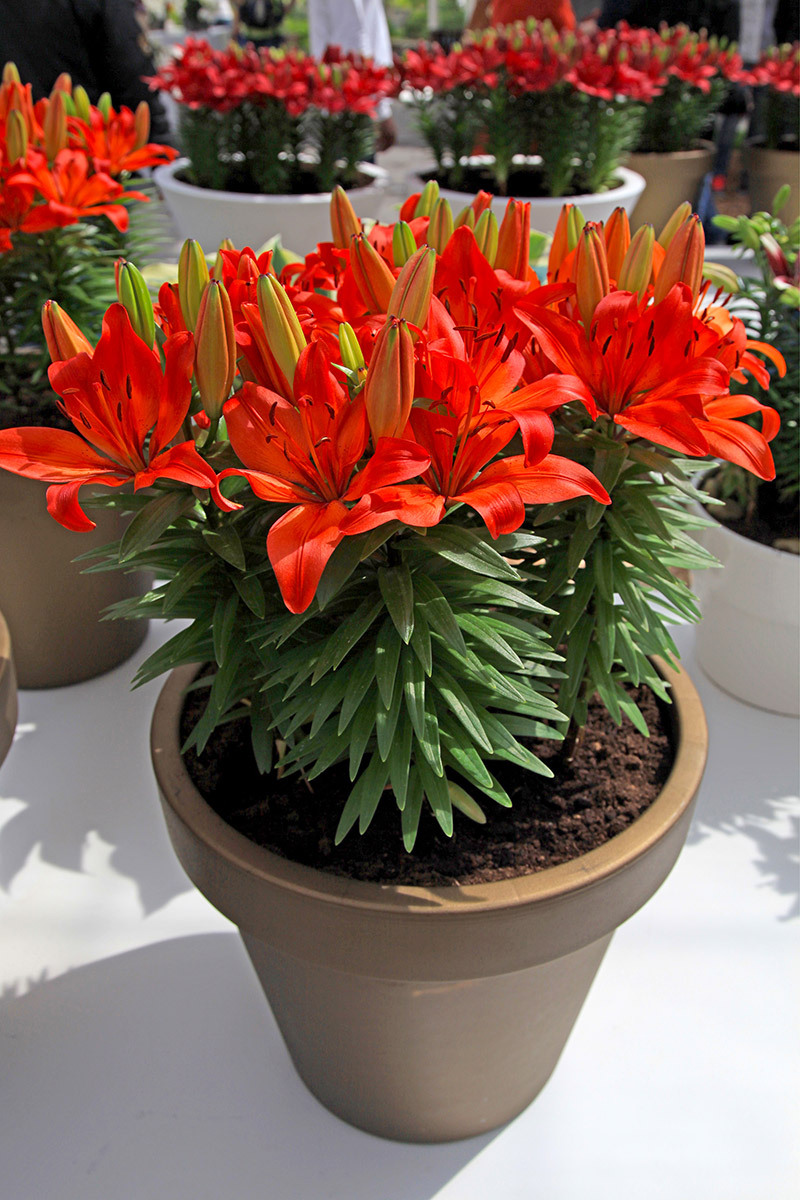Simple Ways to Preserve the Beauty of Poinsettias
Posted on 13/08/2025
Simple Ways to Preserve the Beauty of Poinsettias
Poinsettias are vivid symbols of the holiday season, renowned for their striking red and green foliage. Their allure isn't limited to Christmas decor - with the right care, these plants can add a burst of beauty to your home for months at a time. Wondering how to keep poinsettias looking stunning well into the new year? This comprehensive guide will explore simple ways to preserve the beauty of poinsettias, ensuring these festive plants remain a radiant part of your indoor garden.

Understanding Poinsettias: Origins & Appeal
The poinsettia (Euphorbia pulcherrima) is native to Mexico, where it blooms during winter. Its colorful displays, often mistaken for flowers, are actually specialized leaves called bracts that surround small yellow flowers. Over the centuries, these exotic plants have been cultivated into numerous varieties, featuring hues from classic red to cream, pink, and even bicolor. The beauty of a poinsettia is its seasonal vibrancy and the festive spirit it brings into homes during the holidays.
Why Do Poinsettias Lose Their Beauty Early?
The life and appearance of poinsettias can deteriorate quickly if they're subjected to improper conditions. Common mistakes such as overwatering, cold drafts, and insufficient light can result in leaf drop and faded bracts.
- Incorrect watering leads to root rot or dry leaves.
- Temperature fluctuations can shock the plant, causing bracts and leaves to fall off.
- Poor lighting prevents the plant from maintaining its vibrant color.
- Neglected humidity dries out the plant, leading to premature deterioration.
Luckily, preserving the beauty of poinsettias is achievable with just a few thoughtful steps. Let's explore how to do so!
How to Keep Your Poinsettia Looking Fresh
1. Choose a Healthy Poinsettia
Preserving poinsettias starts before you even bring them home. When shopping:
- Look for plants with deep, vibrant bracts and healthy green foliage.
- The real flowers in the center should be closed or just opening, not dropping pollen.
- Avoid plants with wilted, yellowing, or fallen leaves.
- Check for signs of pest infestation such as sticky residue or webbing.
2. Protect Poinsettias from Cold and Drafts
Poinsettias are sensitive to temperature changes. For optimal poinsettia preservation:
- Keep plants in temperatures between 65?F and 75?F (18?C to 24?C) during the day.
- Night temperatures should not drop below 60?F (15?C).
- Avoid placing them near cold windows, doors, or drafts as sudden chills cause leaves to drop.
- When transporting poinsettias home in winter, protect them with a plastic sleeve or wrap them gently to avoid shock.
3. Provide the Right Amount of Light
Poinsettias thrive on bright, indirect sunlight:
- Place your plant near a south-, east-, or west-facing window that gets ample light but isn't exposed to harsh midday sun.
- Avoid placing the plant under direct sun for long periods as it may scorch the colorful bracts.
- For north-facing windows, consider a supplemental light source during the short winter days.
Adequate light enhances the brilliance and longevity of the vibrant bracts.
4. Water Your Poinsettia Properly
Proper watering is crucial to the beauty and lifespan of poinsettias.
- Water only when the top inch of soil feels dry to the touch.
- Always use room-temperature water; cold water can shock roots.
- Avoid letting the pot sit in standing water. Discard any excess water from the saucer to prevent root rot.
- If the container is wrapped, remove foil or punch drainage holes to encourage proper draining.
- Water thoroughly, but do not overwater. Soggy soil is a common cause of poinsettia demise.
*Tip: Insert your finger into the soil up to the first knuckle to check moisture each week.
5. Maintain Ideal Humidity
During winter, indoor air is often dry due to heating systems. As a tropical species, poinsettias prefer higher humidity levels:
- Place a tray of water with pebbles near the plant to gently increase humidity.
- Group plants together to share humidity benefits.
- Avoid misting poinsettia foliage directly, as this can encourage fungal issues.
This extra attention goes a long way toward preserving poinsettia color and vigor.
6. Keep Away from Heat Sources
Placing your poinsettia near heat vents, radiators, or fireplaces will dry them out rapidly:
- Position your plant away from direct heat sources to maintain a consistent and moderate temperature.
- Steer clear of sudden temperature increases or decreases to avoid shocking the plant.
7. Fertilize Sparingly
During the holidays, poinsettias generally do not need fertilizer, especially if purchased recently. After the New Year, when you intend to keep the plant longer:
- Feed with a balanced, all-purpose houseplant fertilizer once a month from spring to fall, not during the blooming period.
- Cease fertilization if the plant is dropping leaves or looking stressed.
Long-Term Care & Reblooming Tips for Poinsettias
After the holiday season, many consider discarding their poinsettias. However, with attentive care, you can help these plants flourish and even encourage poinsettias to rebloom for next season.
1. Pruning for Longevity
In early spring, when the plant becomes leggy or drops some leaves:
- Cut the stems back to 5-6 inches tall.
- This encourages a bushier shape and healthy new growth.
- If repotting, gently transplant into a slightly larger container with fresh potting soil.
2. Outdoors in Summer
Poinsettias can be placed outdoors once nighttime temperatures consistently stay above 55?F (13?C):
- Place in a shaded or semi-shaded area (never full sun).
- Continue regular watering and monthly fertilizing.
3. Inducing Holiday Color: The Short-Day Treatment
To preserve the vibrant color of poinsettias for the next holiday season, you'll need to simulate the natural short days of winter:
- Starting in late September or early October, place your plant in total darkness for 14-16 hours each night (for example, by covering with a box or placing in a closet).
- Then, return it to bright, indirect daylight for 8-10 hours during the day.
- Continue this regime for about 8-10 weeks until the bracts develop color.
Consistency is key! Even short exposures to light at night (from lamps, TVs, or hallways) can disrupt the coloring process.
Common Problems When Preserving Poinsettias
To maintain the beauty of poinsettias, be watchful for the following issues and address them quickly:
- Leaf drop: Often caused by sudden temperature changes, drafts, or excessively dry/wet conditions.
- Wilting: Usually due to under- or overwatering. Check soil moisture and drainage.
- Yellow foliage: Frequently results from poor drainage or waterlogged soil.
- Pests: Inspect for whiteflies, mealybugs, and aphids. Remove manually or use a gentle, plant-friendly insecticidal soap if needed.
Early detection and prompt intervention will help ensure your poinsettias stay spectacular.
Bonus Tips: Decorating and Displaying Poinsettias
Not only are poinsettias a hallmark of holiday decor, but their lush bracts can brighten up any space:
- Mix them with winter greens for enhanced arrangements on tables or mantels.
- Display several smaller plants together as a centerpiece to create drama.
- Pair white, pink, and red poinsettias for a festive, varied look.
- Switch up their containers for a style update; baskets and metallic pots suit different aesthetics.
Whether you use them throughout your living room, kitchen, or office, well-preserved poinsettias bring cheer everywhere they're seen.
Myths about Poinsettia Toxicity
A common myth is that poinsettias are highly poisonous. In reality, while they contain a milky sap that may cause mild irritation or nausea if ingested, they're generally safe for households with pets or children. Nevertheless, keep them out of reach and discourage gnawing or chewing on leaves.

How to Preserve Poinsettias After the Holidays (Summary Table)
| Step | Tip |
|---|---|
| Choose Wisely | Pick healthy, vibrant plants with no leaf damage. |
| Maintain Temperature | Keep between 65-75?F; avoid drafts and cold. |
| Water Carefully | Let soil dry slightly, avoid sogginess, use room-temp water. |
| Bright, Indirect Light | Ample light but protect from harsh direct sun. |
| Humidity | Use trays with water, group plants, no direct misting. |
| Long-Term Pruning | Cut back after blooming for bushy growth. |
| Holiday Coloring | Day/night routine--darkness for 14-16 hrs to encourage bract color. |
Conclusion: Enjoy Vibrant Poinsettias All Year Long
With these simple techniques for preserving the beauty of poinsettias, you can dramatically extend their colorful contribution to your home. Pay close attention to their environment, watering, and light needs, and these spectacular plants will reward you with lasting beauty - not just for one season, but for years to come.
Embrace the joy poinsettias bring and put these preservation tips into practice. Your poinsettia can become the crowning jewel of your indoor plant collection, remaining as lush and vibrant as the season itself.
For more helpful flower and houseplant care tips, stay tuned to our blog!
Latest Posts
Create a Refreshing Workspace with the 10 Best Low-Care Plants
Simple Ways to Preserve the Beauty of Poinsettias
Unlocking the Secrets of Orchid Maintenance





